How to Clean a Leather Sofa: Quick and Easy Tips
Cleaning a leather sofa can seem like a daunting task, but with the right tools and techniques, it can be done easily and effectively. Leather is a durable and beautiful material that can last for years if properly cared for. In this article, I will share my tips and tricks for cleaning and maintaining your leather sofa, so it looks brand new for years to come.
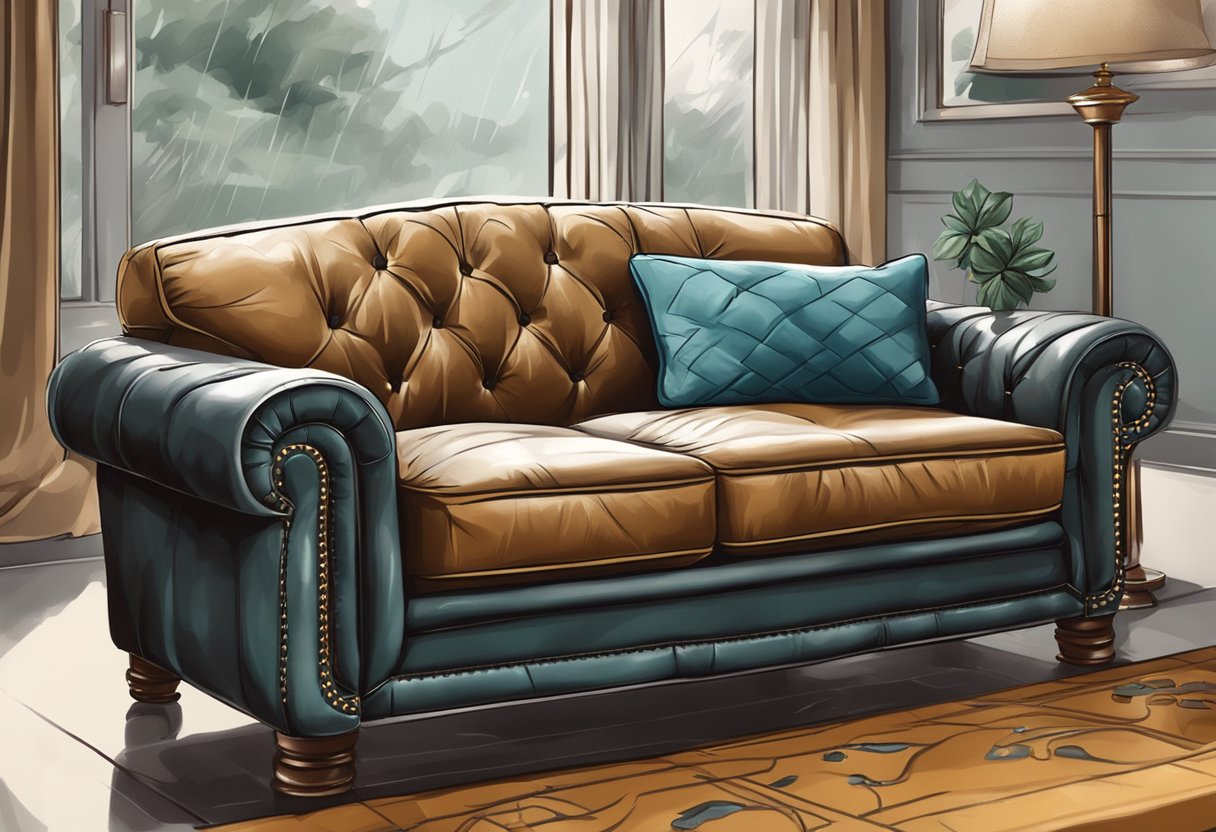
Understanding your leather sofa is the first step in cleaning it. Different types of leather require different cleaning methods, so it’s essential to know what type of leather your sofa is made from. Aniline, semi-aniline, and pigmented leather are the three most common types of leather used in furniture. Aniline leather is the most delicate and requires gentle cleaning, while pigmented leather is the most durable and can withstand more rigorous cleaning methods.
Key Takeaways
- Understanding the type of leather is crucial in cleaning a leather sofa.
- Proper preparation is necessary before cleaning a leather sofa.
- Regular maintenance and conditioning can extend the life of your leather sofa.
Understanding Your Leather Sofa
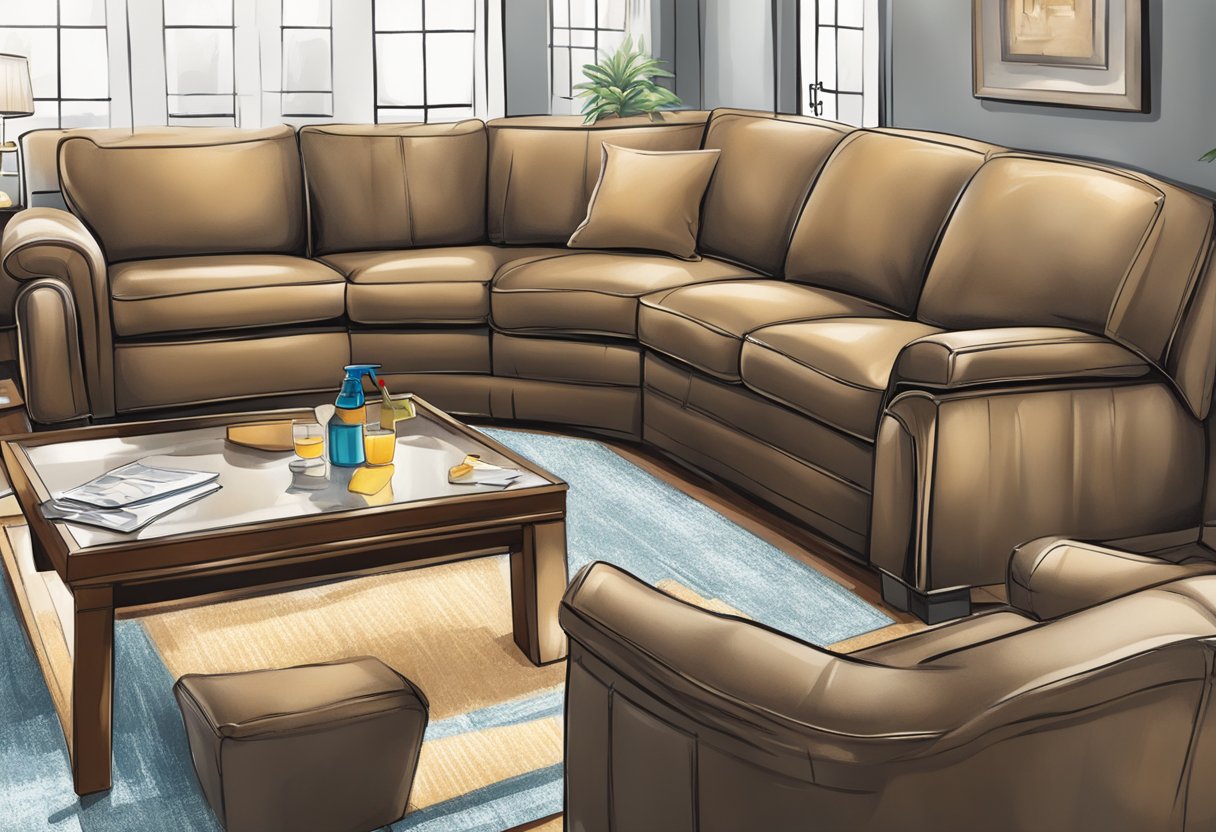
As someone who owns a leather sofa, it’s important to understand the type of leather you have. There are different types of leather, and each requires a specific cleaning method.
One of the most common types of leather is aniline leather, which is a type of leather that is not treated with a protective coating. This means that it is more susceptible to stains, but it also has a natural, soft feel. Semi-aniline leather is a type of leather that is treated with a light protective coating. It is more durable than aniline leather, but it still has a natural feel. Pigmented leather is a type of leather that has a protective coating, making it more resistant to stains and spills. Protected leather is similar to pigmented leather but has a thicker protective coating.
It’s important to know the type of leather you have because each type requires different cleaning methods. For example, aniline leather should only be cleaned with a damp cloth and mild soap, while pigmented leather can be cleaned with a leather cleaner and conditioner.
Another thing to consider is the color of your leather sofa. Light-colored leather should be cleaned more frequently than dark-colored leather because stains are more visible on lighter colors. Mahdessian recommends cleaning light-colored leather every six months and dark-colored leather once a year.
By understanding the type of leather and color of your sofa, you can properly clean and maintain it to ensure it looks its best for years to come.
Preparation for Cleaning
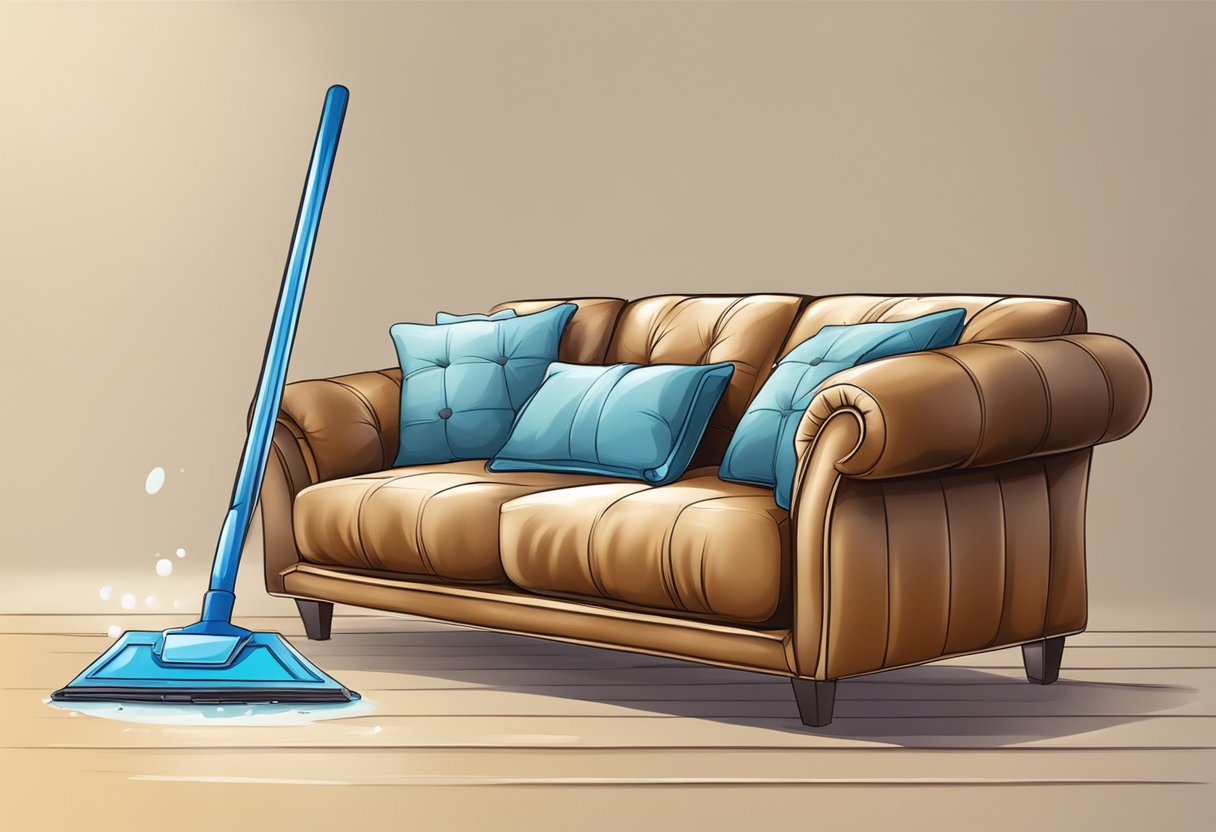
Before I start cleaning my leather sofa, I make sure to prepare the necessary supplies and create a plan of action. Here are the steps I take to prepare for cleaning:
Gather Supplies
I gather the following supplies before starting the cleaning process:
- Vacuum cleaner with a brush attachment
- Soft-bristled brush
- Microfiber cloths
- Leather cleaner
- Leather conditioner
It’s important to choose the right leather cleaner and conditioner for your sofa. I always check the label to make sure the products are safe for my specific type of leather.
Remove Dirt and Debris
I start by removing any dirt, dust, and debris from the sofa. I use the vacuum cleaner with the brush attachment to gently remove any loose particles from the surface and crevices of the sofa. I also remove any pillows and throws from the sofa and vacuum them separately.
Test the Cleaner
Before applying the cleaner to the entire sofa, I always test it on a small, inconspicuous area first. This helps me ensure that the cleaner won’t damage or discolor the leather.
Apply the Cleaner
Once I’m confident that the cleaner is safe for my sofa, I apply it to the entire surface of the sofa. I use a soft-bristled brush to gently scrub the cleaner into the leather, paying extra attention to any stains or spills.
Condition the Leather
After cleaning the sofa, I apply a leather conditioner to keep the leather soft and supple. I apply a small amount of conditioner to a microfiber cloth and rub it into the leather in a circular motion.
By following these steps, I can effectively clean my leather sofa and keep it looking like new.
Basic Cleaning of a Leather Sofa
https://www.youtube.com/watch?v=ev062Ox7jyo&embed=true
As a leather sofa owner, I know how important it is to keep it clean and well-maintained. Basic cleaning of a leather sofa is essential to ensure it looks its best and lasts for years to come. Here are some tips on how to clean a leather couch:
First, I start by removing any loose debris and dust using a vacuum cleaner. I use the upholstery attachment to gently vacuum the surface of the sofa to remove any crumbs, dirt, or pet hair.
Next, I dampen a soft cloth with warm water and wring it out to remove any excess water. I then add a small amount of mild soap to the damp cloth and gently rub it over the surface of the leather sofa in circular motions. It’s important to avoid using too much water or soap as this can damage the leather. I only use a small amount of soap and water to clean the sofa.
After cleaning the sofa, I use a clean damp cloth to wipe away any soap residue. I then buff the leather sofa with a dry cloth to restore its shine and remove any remaining moisture.
It’s important to avoid using harsh chemicals or abrasive materials when cleaning a leather sofa as this can damage the surface of the leather. Instead, I stick to using a damp cloth and mild soap to gently clean the sofa.
In conclusion, basic cleaning of a leather sofa is easy and straightforward. By following these simple steps, you can keep your leather sofa looking clean and well-maintained for years to come.
Dealing with Stains
https://www.youtube.com/watch?v=S3ABv79t1gc&embed=true
When it comes to leather sofas, stains can be a real headache. But don’t worry, with the right techniques and products, you can tackle most stains and keep your leather sofa looking its best.
For ink stains, start by blotting the stain with a paper towel, being careful not to smear the ink further. Next, rub a damp microfiber cloth over a bar of mild soap and work in small circles over the area of the leather with the ink stain. Move to a clean area of the cloth as the ink is transferred. If the stain remains, try using rubbing alcohol as a last resort. Dab a small amount of rubbing alcohol onto a cotton ball and gently rub the stain until it disappears.
Grease stains can be particularly tricky to remove from leather. Start by blotting the stain with a paper towel to remove any excess grease. Next, sprinkle baking soda onto the stain and let it sit for a few hours to absorb the grease. After a few hours, use a clean, damp cloth to wipe away the baking soda. If the stain remains, try using a mixture of equal parts vinegar and water. Dampen a cloth with the vinegar mixture and gently scrub the stain until it disappears.
For other types of stains, try using a mixture of lemon juice and cream of tartar. Mix equal parts lemon juice and cream of tartar to form a paste, then apply the paste to the stain and let it sit for 10-15 minutes. After 15 minutes, use a damp cloth to wipe away the paste. If the stain remains, try using cornstarch. Sprinkle cornstarch onto the stain and let it sit for a few hours to absorb the stain. After a few hours, use a clean, damp cloth to wipe away the cornstarch.
Remember, when dealing with stains on leather, it’s important to be gentle and avoid using harsh chemicals or abrasive materials that could damage the leather. With a little patience and the right techniques, you can keep your leather sofa looking clean and beautiful for years to come.
Conditioning Your Leather Sofa
https://www.youtube.com/watch?v=DY2bPLk-oeE&embed=true
After cleaning your leather sofa, it’s important to condition it to keep it looking and feeling great. Conditioning helps to restore moisture and suppleness to the leather, preventing it from cracking or drying out. Here are some tips on how to condition your leather sofa:
- Choose a high-quality leather conditioner: There are many leather conditioners available on the market, but not all are created equal. Look for a conditioner that is specifically designed for leather furniture and is made with natural ingredients. Commercial leather conditioners such as Leather Honey are a popular choice, but you can also use olive oil as a natural alternative.
- Apply the conditioner: Apply the conditioner to a soft, clean cloth and rub it into the leather in a circular motion. Be sure to apply the conditioner evenly and avoid using too much, as excess conditioner can leave a greasy residue. Focus on areas that are prone to wear and tear, such as the armrests and seat cushions.
- Let it soak in: After applying the conditioner, let it soak into the leather for at least 30 minutes. You can leave it on for longer if you want a deeper conditioning treatment. After the conditioner has soaked in, wipe off any excess with a clean cloth.
- Buff for shine: If you want to give your leather sofa a shiny finish, you can buff it with a soft, dry cloth. This will help to bring out the natural shine of the leather and give it a polished look.
By following these simple steps, you can keep your leather sofa looking and feeling great for years to come. Remember to condition your sofa regularly to maintain its suppleness and prevent it from drying out.
Proper Maintenance of Your Leather Sofa
https://www.youtube.com/watch?v=yo7uzNh32LA&embed=true
As a proud owner of a leather sofa, I know how important it is to maintain its look and feel. Proper maintenance can help you extend the life of your leather sofa and keep it looking brand new for years to come. Here are some tips on how to maintain your leather sofa:
Avoid Direct Sunlight and Heat Sources
Direct sunlight and heat sources can cause your leather sofa to fade and crack over time. To avoid this, keep your leather sofa away from windows or any direct sunlight. Also, keep your leather sofa away from heat sources such as radiators, fireplaces, or heating vents.
Clean Your Leather Sofa Regularly
Cleaning your leather sofa regularly is essential to keep it looking new. Use a soft cloth to wipe down your leather sofa every week. For deeper cleaning, use a leather cleaner that is specifically designed for cleaning leather furniture. Always test the cleaner on an inconspicuous area before using it on the entire sofa.
Condition Your Leather Sofa
Leather furniture can dry out over time, which can cause cracking and fading. To prevent this, condition your leather sofa every six months with a leather conditioner. Conditioning your leather sofa will help it retain its natural oils and keep it looking soft and supple.
Repair Any Damage
If your leather sofa gets scratched or damaged, repair it immediately. Small scratches can be repaired with a leather repair kit, while larger damage may require professional repair. Don’t wait too long to repair any damage, as it can worsen over time and become more difficult to repair.
In conclusion, proper maintenance of your leather sofa is essential to keep it looking new and extend its life. Avoid direct sunlight and heat sources, clean and condition your leather sofa regularly, and repair any damage immediately. By following these tips, you can enjoy your beautiful leather sofa for many years to come.
Do’s and Don’ts in Cleaning Leather Sofas
https://www.youtube.com/watch?v=5UC-0df7N5w&embed=true
When it comes to cleaning leather sofas, there are some do’s and don’ts that you should keep in mind to ensure that your sofa stays in good condition for years to come. Here are some tips to help you clean your leather sofa properly:
Do’s
- Do dust your leather sofa regularly with a soft, dry cloth to remove any loose dirt or dust.
- Do use a leather cleaner that is specifically designed for use on leather furniture. Look for a product that is pH-balanced and contains no harsh chemicals or ammonia.
- Do test any leather cleaner or water-based cleaner on a small, inconspicuous area of the sofa before using it on the entire surface.
- Do follow the manufacturer’s cleaning instructions for your particular type of leather. Some types of leather, such as finished leather, may require special care.
- Do use distilled water when cleaning light-colored leather to avoid discoloration.
- Do use a leather conditioner to keep your sofa soft and supple.
Don’ts
- Don’t use harsh chemicals or ammonia-based cleaners on your leather sofa, as they can damage the leather and cause discoloration.
- Don’t use shoe polish or any other product that is not specifically designed for use on leather furniture.
- Don’t use too much water when cleaning your leather sofa, as this can cause the leather to become waterlogged and damaged.
- Don’t scrub your leather sofa too vigorously, as this can damage the leather and cause it to crack or peel.
- Don’t forget to seal your leather sofa after cleaning it to protect it from future stains and spills.
By following these simple cleaning tips and proper care instructions, you can keep your leather sofa looking its best for years to come. If you’re looking for a DIY solution, mild dish soap mixed with distilled water can be a good alternative to commercial leather cleaners.
Additional Tips for Leather Sofa Care
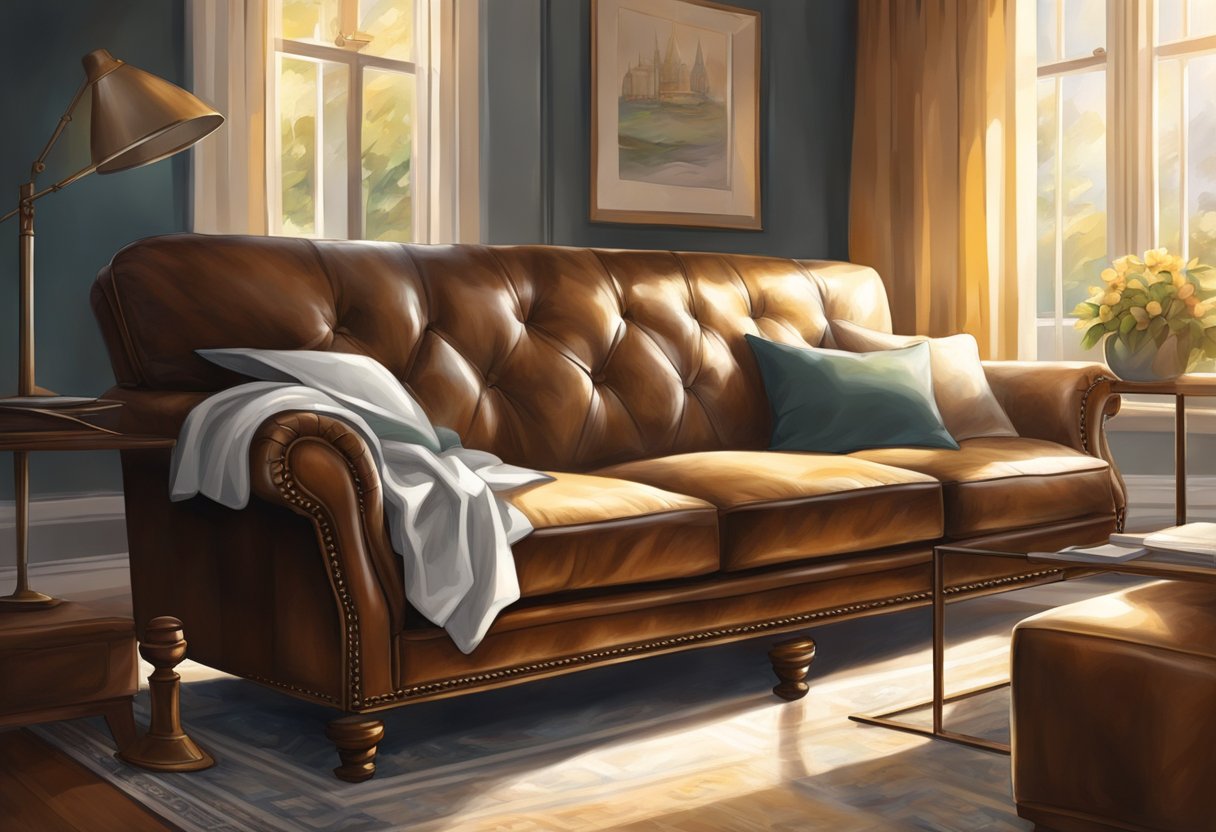
When it comes to taking care of your leather sofa, there are a few additional tips to keep in mind. Here are some things I’ve learned over the years:
- Protect your sofa from sunlight. Direct sunlight can cause leather to fade and dry out over time. If possible, position your sofa in a spot where it won’t be in direct sunlight for long periods of time. You can also use curtains or blinds to block out the sun during the brightest parts of the day.
- Clean up spills and stains right away. The longer a spill or stain sits on your leather sofa, the harder it will be to remove. Use a lint-free cloth to blot up spills as soon as they happen. For tougher stains, try using a mixture of equal parts white vinegar and water to gently wipe away the stain.
- Vacuum your sofa regularly. Dirt, dust, and pet hair can all accumulate on your leather sofa over time. Use a crevice tool to get into the cracks and crevices of your sofa, and use a soft brush attachment to gently remove any dirt or debris from the surface.
- Test any cleaning products in an inconspicuous area first. Before using any new cleaning products on your leather sofa, test them out in a small, inconspicuous area first. This will help you avoid any potential damage or discoloration to your sofa.
- Use circular motions when cleaning. When wiping down your leather sofa, use circular motions to help lift dirt and grime out of the leather’s pores. This will help ensure a deep, thorough clean.
- Use talcum powder to remove grease stains. If you have a grease stain on your leather sofa, try sprinkling talcum powder on the stain and letting it sit for a few hours. The powder will absorb the grease, making it easier to wipe away.
- Invest in microfiber cloths. Microfiber cloths are great for cleaning leather sofas because they’re soft, lint-free, and won’t scratch the surface of your sofa. Use them to gently wipe down your sofa after vacuuming or to remove any remaining dirt or debris.
By following these additional tips for leather sofa care, you can help keep your sofa looking beautiful and in great condition for years to come.
Frequently Asked Questions
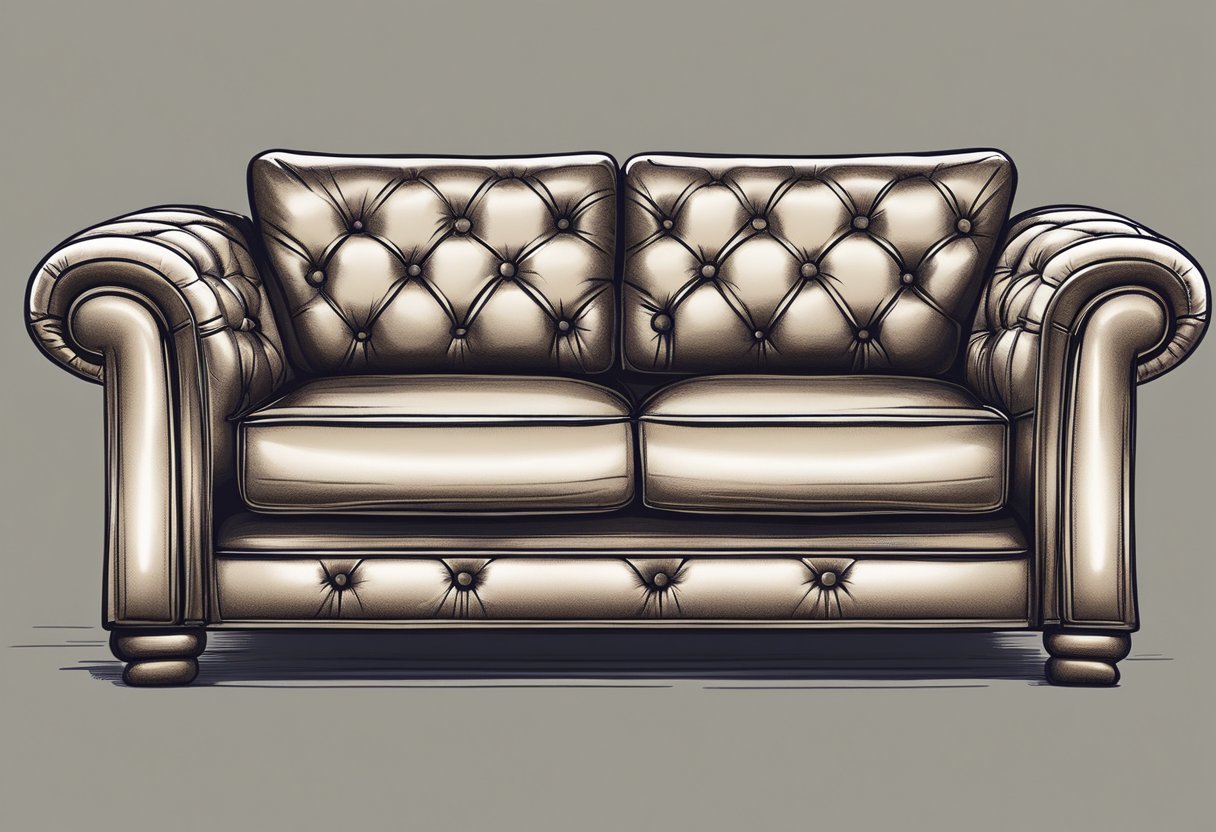
What is the best leather cleaner for sofas?
There are many leather cleaners available in the market, but it is important to choose one that is specifically designed for cleaning leather sofas. Some popular options include Lexol Leather Cleaner and Conditioner, Leather Honey Leather Cleaner, and Weiman Leather Cleaner and Conditioner. Always follow the instructions on the product label and test the cleaner on a small, inconspicuous area of your sofa before using it on the entire surface.
How do I clean a soft leather couch?
Cleaning a soft leather couch requires a gentle touch. Use a soft, microfiber cloth and a mild leather cleaner to wipe down the surface of the sofa. Avoid using too much water, which can damage the leather. After cleaning, dry the sofa with a clean, dry cloth and condition the leather with a leather conditioner.
What household products can I use to clean leather?
Household products like vinegar, baking soda, and dish soap can be used to clean leather, but it is important to use them carefully and in the right proportions. For example, you can mix equal parts white vinegar and water to create a gentle cleaning solution for leather. Always test the solution on a small, inconspicuous area of your sofa before using it on the entire surface.
How do I condition my leather couch?
To condition your leather couch, use a leather conditioner that is specifically designed for use on furniture. Apply a small amount of conditioner to a soft cloth and rub it onto the surface of the leather in a circular motion. Allow the conditioner to soak into the leather for several hours or overnight, then wipe away any excess with a clean, dry cloth.
Can I use Dawn dish soap to clean a leather couch?
Yes, you can use Dawn dish soap to clean a leather couch, but it is important to use it in moderation and to dilute it with water. Mix a small amount of Dawn dish soap with warm water in a bowl, then use a soft, microfiber cloth to wipe down the surface of the sofa. Rinse the cloth with plain water and wipe down the sofa again, then dry with a clean, dry cloth.
Is it better to hire a leather couch cleaning service?
Hiring a professional leather couch cleaning service can be a good option if your sofa is heavily soiled or if you are unsure of how to clean it yourself. Professional cleaners have the expertise and equipment to clean and condition leather sofas safely and effectively. However, it is important to choose a reputable and experienced cleaning service to ensure that your sofa is not damaged during the cleaning process.
